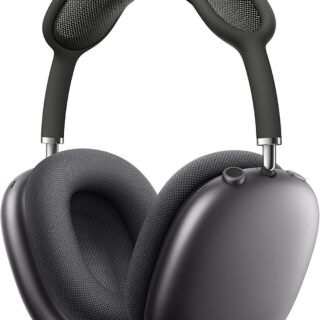Category
Popular Articles
- AI (12)
- Android (38)
- App Suggest (4)
- Apple (15)
- Apple TV (2)
- Bluetooth (3)
- Cars (2)
- ChatGpt (1)
- Chrome (2)
- Did you know? (1)
- E-Commerce News (1)
- Ecommerce Websites business (7)
- Electronics Shopping (5)
- Fashion Tips (3)
- Gaming (4)
- Google Gemini (3)
- Hair Care Tips (2)
- How to (13)
- iCloud (1)
- Infotainment System (1)
- Iphone (101)
- Job Posting (1)
- Lifestyle (3)
- Mac (20)
- Mobile Games (1)
- Netflix (1)
- Online Shopping Websites (2)
- Personal Finance Management (3)
- Product Reviews (3)
- Roku TV (4)
- Samsung (9)
- Shopping Tips (10)
- Spotify (1)
- Tech (92)
- Windows 11 (18)
- Zero Waste (3)
Discounted Products
-
 Leo Creation 144 TC Cotton Double Jaipuri Prints Flat Bedsheet(Pack of 1, Blue, Gree, Red, Grey, Light Grey)
Leo Creation 144 TC Cotton Double Jaipuri Prints Flat Bedsheet(Pack of 1, Blue, Gree, Red, Grey, Light Grey)
₹2,999.00Original price was: ₹2,999.00.₹329.00Current price is: ₹329.00. -
 Home Garage 210 TC Cotton King Floral Fitted (Elastic) Bedsheet(Pack of 1, Grey)
Home Garage 210 TC Cotton King Floral Fitted (Elastic) Bedsheet(Pack of 1, Grey)
₹999.00Original price was: ₹999.00.₹299.00Current price is: ₹299.00. -
 Goodrik 140 TC Cotton Double 3D Printed Flat Bedsheet(Pack of 1, Brown)
Goodrik 140 TC Cotton Double 3D Printed Flat Bedsheet(Pack of 1, Brown)
₹499.00Original price was: ₹499.00.₹229.00Current price is: ₹229.00. -
 GLOBALSHOP 350 TC Microfiber Double Floral Flat Bedsheet(Pack of 1, Multicolor)
GLOBALSHOP 350 TC Microfiber Double Floral Flat Bedsheet(Pack of 1, Multicolor)
₹1,250.00Original price was: ₹1,250.00.₹263.00Current price is: ₹263.00. -
 RisingStar 250 TC Microfiber King Printed Fitted (Elastic) Bedsheet(Pack of 1, FITTED-ROUND-CIRCLES-PREMIUM)
RisingStar 250 TC Microfiber King Printed Fitted (Elastic) Bedsheet(Pack of 1, FITTED-ROUND-CIRCLES-PREMIUM)
₹2,299.00Original price was: ₹2,299.00.₹299.00Current price is: ₹299.00. -
 Home Garage 210 TC Cotton King Floral Fitted (Elastic) Bedsheet(Pack of 1, Fitted Black Green)
Home Garage 210 TC Cotton King Floral Fitted (Elastic) Bedsheet(Pack of 1, Fitted Black Green)
₹1,299.00Original price was: ₹1,299.00.₹299.00Current price is: ₹299.00. -
 Home Garage 180 TC Cotton King 3D Printed Flat Bedsheet(Pack of 1, White)
Home Garage 180 TC Cotton King 3D Printed Flat Bedsheet(Pack of 1, White)
₹999.00Original price was: ₹999.00.₹229.00Current price is: ₹229.00. -
 Home Sizzler 153 cm (5 ft) Polyester Room Darkening Window Curtain (Pack Of 2)(Floral, Maroon)
Home Sizzler 153 cm (5 ft) Polyester Room Darkening Window Curtain (Pack Of 2)(Floral, Maroon)
₹799.00Original price was: ₹799.00.₹299.00Current price is: ₹299.00. -
 Panipat Textile Hub 152.4 cm (5 ft) Polyester Window Curtain (Pack Of 2)(Solid, Aqua)
Panipat Textile Hub 152.4 cm (5 ft) Polyester Window Curtain (Pack Of 2)(Solid, Aqua)
₹1,899.00Original price was: ₹1,899.00.₹299.00Current price is: ₹299.00. -
 Home Sizzler 214 cm (7 ft) Polyester Semi Transparent Door Curtain (Pack Of 2)(Floral, Maroon)
Home Sizzler 214 cm (7 ft) Polyester Semi Transparent Door Curtain (Pack Of 2)(Floral, Maroon)
₹1,199.00Original price was: ₹1,199.00.₹399.00Current price is: ₹399.00. -
 Home Sizzler 153 cm (5 ft) Polyester Room Darkening Window Curtain (Pack Of 2)(Floral, Brown)
Home Sizzler 153 cm (5 ft) Polyester Room Darkening Window Curtain (Pack Of 2)(Floral, Brown)
₹799.00Original price was: ₹799.00.₹299.00Current price is: ₹299.00. -
 Stella Creations 214 cm (7 ft) Polyester Room Darkening Door Curtain (Pack Of 2)(Abstract, Brown)
Stella Creations 214 cm (7 ft) Polyester Room Darkening Door Curtain (Pack Of 2)(Abstract, Brown)
₹1,299.00Original price was: ₹1,299.00.₹449.00Current price is: ₹449.00. -
 Homefab India 152.5 cm (5 ft) Polyester Room Darkening Window Curtain (Pack Of 2)(Floral, Light Blue)
Homefab India 152.5 cm (5 ft) Polyester Room Darkening Window Curtain (Pack Of 2)(Floral, Light Blue)
₹1,199.00Original price was: ₹1,199.00.₹319.00Current price is: ₹319.00. -
 Urban Home 214 cm (7 ft) PVC Transparent Door Curtain Single Curtain(Solid, Off White)
Urban Home 214 cm (7 ft) PVC Transparent Door Curtain Single Curtain(Solid, Off White)
₹699.00Original price was: ₹699.00.₹203.00Current price is: ₹203.00. -
 Panipat Textile Hub 213 cm (7 ft) Polyester Door Curtain (Pack Of 2)(Solid, Brown)
Panipat Textile Hub 213 cm (7 ft) Polyester Door Curtain (Pack Of 2)(Solid, Brown)
₹1,199.00Original price was: ₹1,199.00.₹349.00Current price is: ₹349.00.
Affiliate Links
Promotion

Hey everyone—Jessica here! I’ve always loved stopping to snap a selfie, whether it’s for a fun lunchtime pic or catching special moments with my kids. So when Apple introduced the iPhone 17 with its upgraded Center Stage front camera, I was immediately curious: is it worth the hype? The short answer: yes. Let’s dive into what’s new, how it works, and how it might really change how we take photos and videos in everyday life.
What’s Different with Center Stage on iPhone 17
Here are the major upgrades and features Apple introduced:
- Square front sensor: The front-facing camera now uses a square-format sensor instead of the old 4:3. This gives more room around the edges, which means more flexible framing.
- Higher resolution: The new front camera is 18 MP, up from the older 12 MP models. That means more detail in selfies.
- Flexible orientation: You no longer have to physically rotate your iPhone to get landscape selfies. The camera supports both portrait and landscape-style shots even when you hold your phone vertically.
- AI-powered framing, especially for group shots: Center Stage for photos detects when more people enter the frame and automatically adjusts—rotating from portrait to landscape (or adjusting the crop) to make sure everyone fits in.
- Ultra-stabilized video + Dual Capture: Videos are smoother, even handheld. And with Dual Capture, you can record using both front and rear cameras simultaneously—great for content creators or family vlog-style recording.
Why These Changes Are Big Wins for Real Life
As a mom and someone who cares about photos—not just flashy specs—I see real value in these upgrades:
- More natural grip, less awkward posing
Previously, to get landscape selfies (wide group shots), I’d have to rotate the phone sideways, stretch my arm, risk dropping it, etc. Now, with the square sensor and AI framing, I can hold the phone in portrait, still get a landscape-style field of view, and feel more stable in my grip. Less fumbling, more shots that feel relaxed. - Better group shots without excluding someone
Group photos are always tricky. Someone always ends up partly out of frame. With the AI automatically expanding or rotating crop, everyone has a chance to be in the shot—especially helpful during family gatherings, school events, or holidays. - Great video calls and vlogging
The facial tracking in Center Stage keeps you framed, so if you move while FaceTiming or doing meetings, the camera follows. And smoother stabilization means less shaky video when I’m walking around helping my kids or even when they decide to grab the phone to show me something. Dual Capture helps too—mine is handy when I want to record myself and what’s in front of me (like showing what the kids are doing or showing crafts). - Selfies with more detail
That jump in megapixels (from 12 to 18 MP) means sharper photos, more detail in the background, better color rendition, and more flexibility if I want to crop later without losing quality. For everyday memories, that’s valuable.
Things to Watch Out For / What’s Not Perfect (Yet)
It’s not all perfect (nothing ever is), so here are some things to keep in mind:
- Resolution can be affected by cropping: When the camera crops or adjusts the frame (especially for group shots or switching between portrait/landscape), you may lose some effective resolution. You might not always get full 18 MP if the camera needs to crop in.
- Dependence on lighting: Even with better sensors, low light always hurts. Front cameras often struggle more than rear ones in dim lighting. The stabilization helps, but good lighting still matters.
- AI does its best, but your composition still counts: The automatic framing is great, but sometimes the algorithm’s idea of “everyone should fit” means people at the edges get pushed outward or a crop feels tight. It’s not a complete replacement for being a thoughtful photographer.
- Battery/processing trade-off: Keeping AI features engaged, doing stabilization, constant video call framing — all those consume power. If you’re recording a lot or constantly in video call mode, battery usage will be higher.
How to Use Center Stage on iPhone 17: Tips & Tricks
Here are some practical tips so you can get the best results from the new camera:
- When taking solo selfies, try both portrait and landscape styles to see which framing feels better for your face and background.
- For group shots, give a little extra room around edges so the AI has space to expand without cutting someone off.
- Use Dual Capture when you want context: e.g., record what’s happening around you and your reaction.
- Test out ultra-stabilized video in well-lit conditions so you can see how smooth it is.
- Clean your lens! Even small smudges can reduce clarity, which matters more now that detail has improved with the new sensor.
What This Means for Different Users
- Parents: Great for family selfies, getting everyone in the frame even if someone is joining late or moving. Easier to hold the phone steady with kids.
- Content creators: More flexibility for video, especially with Dual Capture and improved front stabilization. Also, the landscape option without rotating opens up new creative framing.
- Everyday users: Even if you’re only using it for FaceTime or Instagram Stories, the upgrades mean your video calls look crisper, and you’ll spend less effort composing shots.
My Final Thoughts
After looking into all of this, here’s where I land:
The iPhone 17 Center Stage front camera feels like a thoughtful upgrade—not just tech specs for the sake of specs. It’s designed around how we actually use phones: holding them one-handed, wanting stable video calls, capturing group moments without juggling angles, and having better-looking photos with less effort.
If selfies, video calls, or family photo memories are important to you (and as someone with a toddler always trying to steal my phone), these changes matter. While the rear cameras and other features still matter a lot, this front-camera upgrade makes a real difference in how smoothly daily photo/video moments flow.
If you upgrade to iPhone 17, use these features. Don’t assume “automatic” means “perfect”—experiment a bit. But yes, for me, the Center Stage front camera is one of those things you’ll wonder how you lived without once you have it.
Image credit: https://www.apple.com/iphone-17/
Written by Bazaronweb
Latest Tech Articles
- 5 Ways to Backup and Restore Registry Settings in Windows

- iMessage Not Syncing Between iPhone & Mac? 8 Proven Ways to Fix Account & Device Issues

- Outlook Not Receiving Emails? 8 Proven Fixes for Windows, Mac & Mobile

- Zoom Not Connecting? 7 Ways to Fix Meeting Join Errors on Windows & Mac

- Microsoft Teams Not Opening? 5 Proven Fixes to Restart Your Workspace

Products
-
![Apple Watch Ultra 3 [GPS + Cellular 49mm] Running & Multisport Smartwatch w/Rugged Titanium Case w/Black Titanium Milanese Loop - M. Satellite Communications, Advanced Health & Fitness Tracking](https://bazaronweb.com/retailstores/wp-content/uploads/2025/09/apple-watch-320x320.jpg) Apple Watch Ultra 3 [GPS + Cellular 49mm] Running & Multisport Smartwatch w/Rugged Titanium Case w/Black Titanium Milanese Loop - M. Satellite Communications, Advanced Health & Fitness Tracking
Apple Watch Ultra 3 [GPS + Cellular 49mm] Running & Multisport Smartwatch w/Rugged Titanium Case w/Black Titanium Milanese Loop - M. Satellite Communications, Advanced Health & Fitness Tracking
-
 Apple iPad mini (A17 Pro): Apple Intelligence, 8.3-inch Liquid Retina Display, 256GB, Wi-Fi 6E, 12MP Front/12MP Back Camera, Touch ID, All-Day Battery Life — Purple
Apple iPad mini (A17 Pro): Apple Intelligence, 8.3-inch Liquid Retina Display, 256GB, Wi-Fi 6E, 12MP Front/12MP Back Camera, Touch ID, All-Day Battery Life — Purple
-
 Apple AirPods Max Wireless Over-Ear Headphones, Active Noise Cancelling, Transparency Mode, Personalized Spatial Audio, Dolby Atmos, Bluetooth Headphones for iPhone – Space Gray
Apple AirPods Max Wireless Over-Ear Headphones, Active Noise Cancelling, Transparency Mode, Personalized Spatial Audio, Dolby Atmos, Bluetooth Headphones for iPhone – Space Gray
-
 Apple AirPods Pro 2 Wireless Earbuds, Active Noise Cancellation, Hearing Aid Feature, Bluetooth Headphones, Transparency, Personalized Spatial Audio, High-Fidelity Sound, H2 Chip, USB-C Charging
Apple AirPods Pro 2 Wireless Earbuds, Active Noise Cancellation, Hearing Aid Feature, Bluetooth Headphones, Transparency, Personalized Spatial Audio, High-Fidelity Sound, H2 Chip, USB-C Charging
-
 Leo Creation 144 TC Cotton Double Jaipuri Prints Flat Bedsheet(Pack of 1, Blue, Gree, Red, Grey, Light Grey)
Leo Creation 144 TC Cotton Double Jaipuri Prints Flat Bedsheet(Pack of 1, Blue, Gree, Red, Grey, Light Grey)
₹2,999.00Original price was: ₹2,999.00.₹329.00Current price is: ₹329.00.
Leave a Reply